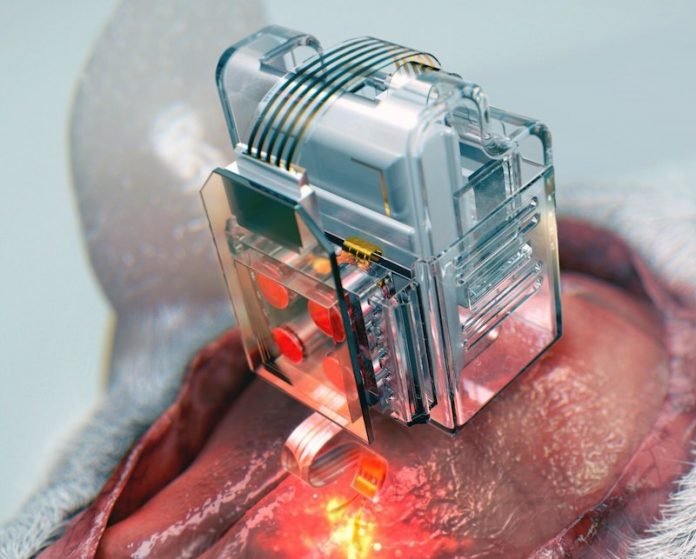
In a new study, researchers have invented a device that can control neural circuits using a tiny brain implant controlled by a smartphone.
The finding can speed up efforts to treat brain diseases such as Parkinson’s, Alzheimer’s, addiction, depression, and pain.
The research was conducted by a team in Korea and the United States.
The device uses Lego-like replaceable drug cartridges and powerful Bluetooth low-energy to target specific neurons in the brain.
The wireless neural device enables chronic chemical and optical neuromodulation that has never been achieved before.
According to the team, this technology surpasses conventional methods used by neuroscientists, which usually involve rigid metal tubes and optical fibers to deliver drugs and light.
The new device uses a replaceable drug cartridge, which could allow the team to study the same brain circuits for several months without worrying about running out of drugs.
These ‘plug-n-play’ drug cartridges were assembled into a brain implant for mice with a soft and ultrathin probe (thickness of a human hair), which consisted of microfluidic channels and tiny LEDs (smaller than a grain of salt), for unlimited drug doses and light delivery.
Controlled with an elegant and simple user interface on a smartphone, the team can easily trigger any specific combination or precise sequencing of light and drug deliveries without need to be physically inside the laboratory.
The team is trying to further develop this technology to make a brain implant for clinical applications.
It could help us develop new therapeutics for pain, addiction, and emotional disorders.
The lead author of the study is Raza Qazi, a researcher with the Korea Advanced Institute of Science and Technology (KAIST) and the University of Colorado Boulder.
The study is published in Nature Biomedical Engineering.
Copyright © 2019 Knowridge Science Report. All rights reserved.



